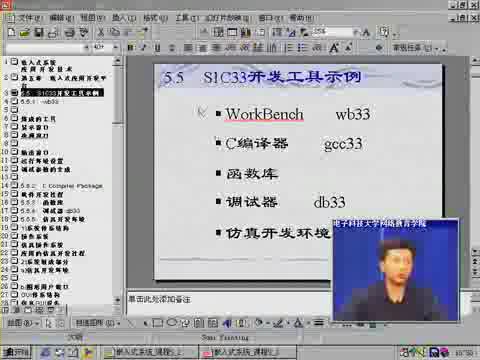Ping程序的C語言編程
大部分人用ping命令只是作為查看另一個系統的網絡連接是否正常的一種簡單方法。在這篇文章中,作者將介紹如何用C語言編寫一個模擬ping命令功能的程序。
ping命令是用來查看網絡上另一個主機系統的網絡連接是否正常的一個工具。ping命令的工作原理是:向網絡上的另一個主機系統發送ICMP報文,如果指定系統得到了報文,它將把報文一模一樣地傳回給發送者,這有點象潛水艇聲納系統中使用的發聲裝置。
例如,在Linux終端上執行ping localhost命令將會看到以下結果:
PING localhost.localdomain (127.0.0.1) from 127.0.0.1 : 56(84) bytes of data.
64 bytes from localhost.localdomain (127.0.0.1): icmp_seq=0 ttl=255 time=112 usec
64 bytes from localhost.localdomain (127.0.0.1): icmp_seq=1 ttl=255 time=79 usec
64 bytes from localhost.localdomain (127.0.0.1): icmp_seq=2 ttl=255 time=78 usec
64 bytes from localhost.localdomain (127.0.0.1): icmp_seq=3 ttl=255 time=82 usec
--- localhost.localdomain ping statistics ---
4 packets transmitted, 4 packets received, 0% packet loss
round-trip min/avg/max/mdev = 0.078/0.087/0.112/0.018 ms
由上面的執行結果可以看到,ping命令執行后顯示出被測試系統主機名和相應IP地址、返回給當前主機的ICMP報文順序號、ttl生存時間和往返時間rtt(單位是毫秒,即千分之一秒)。要寫一個模擬ping命令,這些信息有啟示作用。
要真正了解ping命令實現原理,就要了解ping命令所使用到的TCP/IP協議。
ICMP(Internet Control Message,網際控制報文協議)是為網關和目標主機而提供的一種差錯控制機制,使它們在遇到差錯時能把錯誤報告給報文源發方。ICMP協議是IP層的一個協議,但是由于差錯報告在發送給報文源發方時可能也要經過若干子網,因此牽涉到路由選擇等問題,所以ICMP報文需通過IP協議來發送。ICMP數據報的數據發送前需要兩級封裝:首先添加ICMP報頭形成ICMP報文,再添加IP報頭形成IP數據報。如下圖所示
IP報頭
ICMP報頭
ICMP數據報
IP報頭格式
由于IP層協議是一種點對點的協議,而非端對端的協議,它提供無連接的數據報服務,沒有端口的概念,因此很少使用bind()和connect()函數,若有使用也只是用于設置IP地址。發送數據使用sendto()函數,接收數據使用recvfrom()函數。IP報頭格式如下圖:
在Linux中,IP報頭格式數據結構(
struct ip
{
#if __BYTE_ORDER == __LITTLE_ENDIAN
unsigned int ip_hl:4; /* header length */
unsigned int ip_v:4; /* version */
#endif
#if __BYTE_ORDER == __BIG_ENDIAN
unsigned int ip_v:4; /* version */
unsigned int ip_hl:4; /* header length */
#endif
u_int8_t ip_tos; /* type of service */
u_short ip_len; /* total length */
u_short ip_id; /* identification */
u_short ip_off; /* fragment offset field */
#define IP_RF 0x8000 /* reserved fragment flag */
#define IP_DF 0x4000 /* dont fragment flag */
#define IP_MF 0x2000 /* more fragments flag */
#define IP_OFFMASK 0x1fff /* mask for fragmenting bits */
u_int8_t ip_ttl; /* time to live */
u_int8_t ip_p; /* protocol */
u_short ip_sum; /* checksum */
struct in_addr ip_src, ip_dst; /* source and dest address */
};
其中ping程序只使用以下數據:
IP報頭長度IHL(Internet Header Length)?D?D以4字節為一個單位來記錄IP報頭的長度,是上述IP數據結構的ip_hl變量。
生存時間TTL(Time To Live)?D?D以秒為單位,指出IP數據報能在網絡上停留的最長時間,其值由發送方設定,并在經過路由的每一個節點時減一,當該值為0時,數據報將被丟棄,是上述IP數據結構的ip_ttl變量。
ICMP報頭格式
ICMP報文分為兩種,一是錯誤報告報文,二是查詢報文。每個ICMP報頭均包含類型、編碼和校驗和這三項內容,長度為8位,8位和16位,其余選項則隨ICMP的功能不同而不同。
Ping命令只使用眾多ICMP報文中的兩種:"請求回送'(ICMP_ECHO)和"請求回應'(ICMP_ECHOREPLY)。在Linux中定義如下:
#define ICMP_ECHO 0
#define ICMP_ECHOREPLY 8
這兩種ICMP類型報頭格式如下:
在Linux中ICMP數據結構(
struct icmp
{
u_int8_t icmp_type; /* type of message, see below */
u_int8_t icmp_code; /* type sub code */
u_int16_t icmp_cksum; /* ones complement checksum of struct */
union
{
u_char ih_pptr; /* ICMP_PARAMPROB */
struct in_addr ih_gwaddr; /* gateway address */
struct ih_idseq /* echo datagram */
{
u_int16_t icd_id;
u_int16_t icd_seq;
} ih_idseq;
u_int32_t ih_void;
/* ICMP_UNREACH_NEEDFRAG -- Path MTU Discovery (RFC1191) */
struct ih_pmtu
{
u_int16_t ipm_void;
u_int16_t ipm_nextmtu;
} ih_pmtu;
struct ih_rtradv
{
u_int8_t irt_num_addrs;
u_int8_t irt_wpa;
u_int16_t irt_lifetime;
} ih_rtradv;
} icmp_hun;
#define icmp_pptr icmp_hun.ih_pptr
#define icmp_gwaddr icmp_hun.ih_gwaddr
#define icmp_id icmp_hun.ih_idseq.icd_id
#define icmp_seq icmp_hun.ih_idseq.icd_seq
#define icmp_void icmp_hun.ih_void
#define icmp_pmvoid icmp_hun.ih_pmtu.ipm_void
#define icmp_nextmtu icmp_hun.ih_pmtu.ipm_nextmtu
#define icmp_num_addrs icmp_hun.ih_rtradv.irt_num_addrs
#define icmp_wpa icmp_hun.ih_rtradv.irt_wpa
#define icmp_lifetime icmp_hun.ih_rtradv.irt_lifetime
union
{
struct
{
u_int32_t its_otime;
u_int32_t its_rtime;
u_int32_t its_ttime;
} id_ts;
struct
{
struct ip idi_ip;
/* options and then 64 bits of data */
c語言相關文章:c語言教程
tcp/ip相關文章:tcp/ip是什么













評論